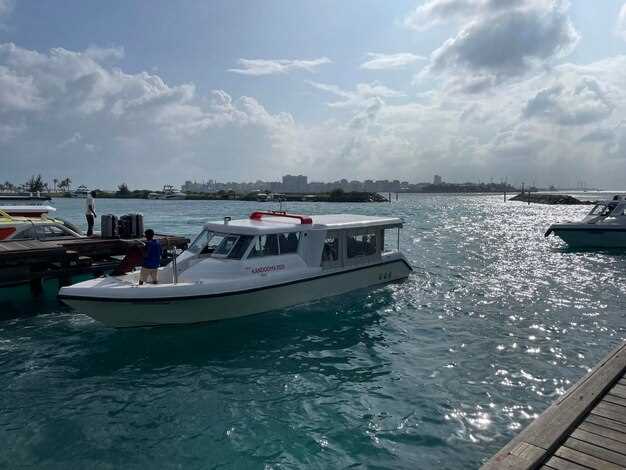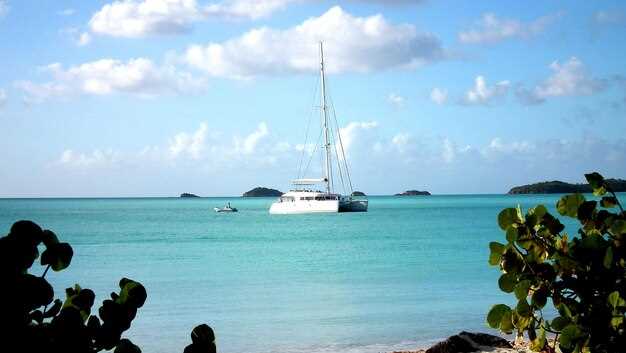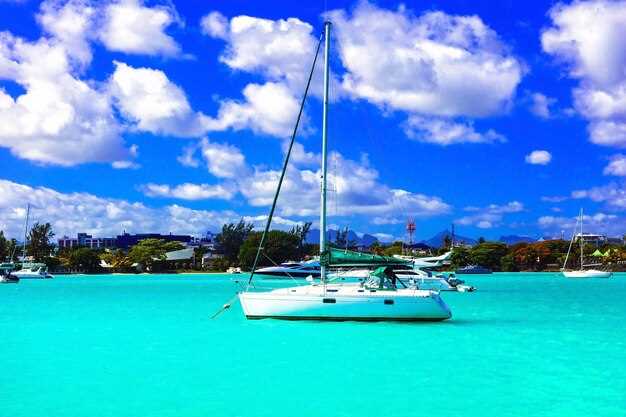Book a Bahamas Abacos yacht charter this year to enjoy a caribbean sailing experience with family or friends. A 7- to 10-day itinerary works best, with 3- to 4-cabin yachts that give everyone privacy and comfort. Start in Marsh Harbour, which makes air connections simple, then explore Hope Town and Treasure Cay; the route uses calm waters, golden beaches, and beautiful scenery that keeps sailors energized. A calculated plan fills days with snorkeling, island visits, and evenings aboard a vessel rooted in bahamian heritage.
Arrange arrivals through Marsh Harbour airport or Treasure Cay airport, then drive the short road from plymouth to your base and board your yacht. Look for boats with 3-4 cabins, a spacious saloon, and a sun deck; a well-equipped galley makes provisioning easy. Below the surface, you’ll find clear water ideal for snorkeling, and your crew can arrange visits to historic sites that echo the archipelago heritage.
Charter rates in Abacos range from roughly 2,500 dollar per day for a small 2- to 3-cabin boat to 6,000 dollar per day for a premium 4-cabin catamaran. For a comfortable 3- or 4-cabin vessel, expect about 3,500–4,500 dollar per day in peak season, which translates to roughly 24,500–31,500 dollar for a week. Chiar și on a tighter budget, you maximize value per dollar with careful provisioning and a smart skipper.
What to pack includes lightweight clothing, reef-safe sunscreen, a wide-brim hat, and a waterproof bag for shore excursions. Add a compact camera for golden hour shots and a few bahamian coins for tips.
Let your crew guide you to sheltered coves, lighthouses, and seaside eateries to fill evenings with light music and Bahamian flavors. The Abacos coast offers beautiful views, a rich heritage, and a sense of freedom that resonates with sailors who value a relaxed pace. If you plan a longer stay, consider the road connections between Great Abaco and the out islands to extend your time and enjoy even more golden light across turquoise water.
Practical Sailing Conditions and Weather in the Bahamas

Plan your visit in the dry season, November through April, for steady trades and calm mornings that let you enjoy time on deck and ashore.
Winds come from the east or northeast, usually 12–20 knots with occasional gusts to 25 knots. A passing cold front can bring a brief shift to the north or west and stronger gusts, so you must keep an eye on the forecast and be ready to reef or shorten sail. When the wind is steady, holding a course between sand and reefs feels predictable, and you can travel between anchorages with confidence.
Sea state stays comfortable inside the Abacos chain. Expect 1–3 ft chop in protected areas and 2–6 ft offshore when trades run stronger. Such conditions make running a light to mid-weight sail plan feel solid, and you’ll sound confident as you switch between calms and a short, clean wake behind your yachts.
Temperature and visibility are favorable for most activities. Air ranges from the mid 70s to low 90s Fahrenheit (24–34°C), water sits in the mid to high 70s (26–29°C). Clear, candy-striped sunsets over green water create a memorable backdrop for the evening watch, and you’ll find that beaches stay inviting after a long day of sailing or diving.
Seasonal patterns and planning tips:
- Dry season (Nov–Apr): reliable trades, calmer mornings, and excellent conditions for day cruises between Marsh Harbour, Elbow Cay, and subsequent stops. This is a good time to visit with kids or customers seeking relaxed cruising and family time.
- Wet season (May–Oct): higher humidity and daily showers. Afternoon squalls are common, and hurricane season runs June–Nov, so monitor press and forecasts closely and have a contingency plan for rapid changes.
- Fronts and wind shifts: cold fronts from the north can arrive with strong, short-lived winds; treat them as a sign to adjust sail plans and anchor in a sheltered place before dusk.
Practical navigation and on-board comfort:
- Anchorages and routes: look for protected coves along the south coast of Great Abaco and around Man-O-War and Guana to reduce exposure during unsettled periods.
- On-board setup: cabins stay comfortable with good ventilation; a grill on deck helps keep meals flexible during variable runs between stops.
- Beaches and diving: the Abacos offer green, clear water and superb diving sites; plan a dive or snorkel day when the weather window stays open and the seas stay flat enough for a relaxed entry.
- Communications: carry a reliable VHF and a satellite option for updates; use the forecast press and model runs to time departures and arrivals, especially when guests are onboard looking for a smooth rhythm to the day.
- Local knowledge: locals and coopers along the docks can provide current conditions, fishing tips, and safe mooring spots that suit your plan and name of the next stop.
Tips for a smooth vacation:
- Carry a light jacket for early mornings and late evenings; the air can feel cooler near open water, even when the sun is high.
- Pack flexible meals and a robust grill plan; you’ll appreciate the option to cook aboard during a breezy afternoon when land travel is limited.
- Keep a simple, repeatable routine: pre-dawn system checks, mid-morning reef checks, and a sunset shore visit to make the most of time and weather windows.
- Know your limits and the limits of your crew; if weather looks uncertain, adjust to a conservative plan and enjoy a comfortable place to anchor or a protected harbor.
Whether you are a first-time traveler or a seasoned captain, these conditions help you find a good rhythm for a Bahamas Abacos vacation, with clear seas, candy-striped skies, and memorable beaches. Look for a balance between diving adventures, quiet cruising, and time with locals who can point you toward the best place to visit, day after day.
Optimal seasons for Abacos charters and how trade winds shape itineraries
The best time to charter Abacos will be November through April, when NE trade winds stay steady at 15-20 knots and clear days dominate. This window keeps passenger comfort high, minimizes travel delays, and warmer days with cooler nights that travelers enjoy. Sailors from local clubs advise that booking early locks in the best pricing and ensures a smoother experience around Plymouth. Advice from experienced sailors helps you adjust for winds, currents, and anchorage choices. Travelers will find the abacos archipelago rewarding.
From May through October, warmer air and shifting winds bring more variability. Plan smaller hops between Marsh Harbour, Hope Town, Green Turtle Cay, and Man-O-War Cay, with anchorages in protected channels. Expect weather blocks and squalls, and use the club or press updates to refine your plan. In winter, whale sightings may appear along outer channels, adding a special touch to travel.
Trade winds from the NE guide your course; map a route with waypoints between Marsh Harbour, Elbow Cay, and Green Turtle Cay, then swing south along the channels toward Guana Cay and Cherokee Sound. For smaller bareboat crews, keep legs under 20-30 miles and favor sand beaches and sheltered bays for overnight stops. If conditions were to change, you can adjust to a shorter course and stay over in a calm harbor; a recommended approach for longer trips is to alternate longer hops with short anchorages. This pragmatic planning is common among sailors being cautious about forecast accuracy.
Insurance and equipment checks form the practical backbone of a smooth voyage. Most charters include safety gear, charts, and a cruising guide, making a passenger-ready boat suitable for travel between local cities and travel hubs. Plymouth serves as a convenient stop for shore visits and refueling; plan 4-7 days on a typical itinerary with 2-3 anchorages per leg to maximize comfort and the best winds, while allowing room for flexibility.
Average wind speeds, wave heights, and sea state by month
Plan February charters for steadier trades and calmer seas, ideal for guests who want to sail between crystal coves and sandy spots along the island routes.
| Month | Avg wind (knots) | Wave height (ft) | Sea state |
|---|---|---|---|
| January | 15–20 | 2–4 | 3–4 |
| february | 16–21 | 2–4 | 3–4 |
| March | 14–18 | 2–3 | 3 |
| April | 12–16 | 2–3 | 2–3 |
| May | 10–14 | 2–3 | 2–3 |
| June | 8–12 | 1–2 | 2 |
| July | 7–11 | 1–2 | 2 |
| August | 7–10 | 1–2 | 2 |
| September | 6–9 | 1–2 | 2 |
| October | 9–13 | 1.5–2.5 | 2–3 |
| November | 10–14 | 2–3 | 2–3 |
| December | 12–16 | 2–3 | 2–3 |
This pattern supports a balanced vacation, with most itineraries built around nearby destinations and iconic spots. When you sail, consider a stop at crystal coves and rock shores, with an airport hop to your next destination if needed. Yachts sailed by guests will benefit from predictable winds, while additional days can be added to explore sandy beaches or reef passages. The dollar cost remains stable for well-planned weeks, and a 7–9 day passage delivers a complete circuit of the island and its spots, with a clear price for gear and crew.
Currents, tides, and navigation tips around the Abaco chain
Plan every leg around slack-water windows and check tide tables with your captain before departure. Start in the morning when light trades set up predictable shifts, and aim for daylight arrivals at preferred coastside destinations or docks. Along the Abaco chain, candy-striped daymarks and rock‑recessed channels guide routes; rely on them to align your approach and confirm you stay in safe water around key passes and anchorages.
Expect surface currents to run 1–3 knots in main passes, with stronger bursts up to 4–5 knots when northeast winds push through open gaps. Between cays and along the coast, currents merge with tidal exchange, creating zones of faster flow near channels like Whale Cay and around major bays. With winter winds, keep a margin for sudden gusts and adjust speed early to prevent stern‑quarter lift near shallow reefs.
Tides in the Abaco area present a modest range, typically about 0.3–0.9 meters (1–3 feet), with spring tides briefly peaking higher and neaps easing. Plan crossings to align with the larger tidal swing when crossing narrow channels; dropping the stern enough to expose a shallow rock or sand bar can save time but demands precise helm control and a steady hand at the wheel.
Use marked channels and keep to the safe side of reefs, especially around rock outcrops close to the coast and near passages between islands. If you anchor near Marsh Harbour, Hope Town, or Man‑O‑War Cay, watch for smaller, candy-striped marks that indicate shallow zones and outbound traffic lanes. Maintain a steady rate of travel, avoid rushing past tight passages, and verify your depth twice before turning a tight corner in a crowded bay or near a harbor wall.
For American travelers with cabin‑style charters and family crews, winter conditions bring cooler air and calmer mornings, yet seas can still tighten after a front. Include patience in your schedule and select shorter hops between familiar destinations; the climate allows comfortable sailing days, including long stays at welcoming harbors where you can rest in a soft breeze and enjoy the local hospitality and houses along the coast. Build your knowledge-theory from real experiences, and keep a flexible plan that adapts to wind shifts, water clarity, and the comfort of every passenger aboard.
Weather forecasting tools and reliable data sources for planning

Recommended workflow: check the Bahamas Met Office marine forecast and the NWS/NHC tropical outlook at least 48 hours before departure. Albert, a captain based in Marsh Harbour, looks at official forecasts first and then cross-checks model data for the next 3–5 days. If you want reliable planning, lock in a 3-day window for longer hops and set 24-hour checks for day-of changes, covering the winter and year-round charters.
Core sources and tools include official forecasts, satellite imagery, and buoy observations. Use Bahamas Met Office products for coastal and island forecasts and the NHC for tropical activity. For model data, pull ECMWF and GFS runs (and UKMET if available) and view them in Windy, Meteoblue, or similar visual tools. If you want a quick baseline, these layers give wind, wave height, and pressure, and you can back them up with observations from nearby grounds and buoys.
Key hazards to watch: rising winds, squalls near reefs, rough seas, and sudden changes when fronts sweep through. Set conservative thresholds for day passages: 15–20 knots typical, 20–28 knots for coastal hops in winter, and be ready to reroute if gusts spike. Do not miss a 12-hour update; adjust plans, call the crew, and maintain safe margins between open-water legs and sheltered anchorages.
Data reliability and timing: rely on island observations, offshore grounds, satellite data, and buoy measurements. Forecasts update every 6–12 hours; cross-check the latest 72-hour outlook with the current 24-hour run. If you’re having trouble with a source, back it up with a second system and keep your itinerary flexible.
Itineraries and provisioning: build itineraries with margins, allowing time for weather checks. For passenger comfort and safety, plan shorter hops during unsettled periods and anchor when fronts approach. When you plan groceries, plan roughly a dollar more for delays and keep a supply of shelf-stable items; for those who want to stock liquor, coordinate deliveries at your first port of call. Make a call to marinas ahead of time to confirm berthing and services, having a backup route if storms rise.
Skills and courses: improve weather interpretation with short courses offered by sailing clubs or charter operators; focus on reading winds, fronts, and model outputs. Looking to raise your skills? These courses help you plan more confidently across different times of the year. Albert benefits from practicing with different forecast ensembles and learning to weigh risks against grounds and passenger comfort, while you map itineraries that suit the local climate and the rising seas.
Gear, safety, and packing tailored to Bahamas sailing conditions
Pack a compact, waterproof safety kit and a marine VHF radio with spare batteries for every voyage, plus verify insurance coverage for a bareboat charter and guest medical evacuation options. Have a backup beacon, flares, and a whistle easily accessible, and store them in a dry bag near the companionway so guests can grab them quickly if weather shifts along the coast.
Wear quick-dry layers in green and pastel hues; they stay visible against white decks and coral reefs. Pack UV shirts, a lightweight rain shell, and water shoes for rocky shores. Use dry bags in green or pastel to separate clean clothes from sun-soaked gear. Keep all navigation gear sealed from spray in a 10-liter dry bag or a splashproof pouch. Bring a sturdy anchor with 1:7 scope in moderate seas, plus a compact adjustable anchor buoy and a coast-ready anchor light for nights at anchor near nearby islands.
For navigation, rely on a dedicated chart plotter and paper charts of the Abacos. Keep a printed list of waypoints and safe anchorages, marked with buoy colors, and verify depths before approaching shallows. Carry a backup compass and a spare GPS battery. In case of a squall, have a hand-held VHF as a backup and follow the sound of nearby traffic and beacon signals to avoid shoals. Look for crystal-clear water signs of reefs, and plan routes for easy, direct hops between islands with nearby marinas and restaurants for guests to find a great meal after sunset.
December nights can bring cooler air and light winds. Pack a fleece, long pants, and a compact sleeping bag for cockpit nights. Sunscreen stays necessary, and sunglasses with retention straps plus a brimmed hat cut glare on crystal water. Keep a compact headlamp for deck checks and a well-vented cabin to prevent mildew after rain. Have a well-fitting life jacket for every guest, including a lightweight inflatable option for easy on-deck use.
For fishing and wildlife, carry a simple kit: a 6- to 8-foot rod, 10-20 lb line, a small selection of lures, and a landing net. Follow local rules and bag limits; bonefish flats lie along the coast and nearby channels. Whale sightings happen offshore on certain routes, so keep a respectful distance and use slow, steady retrieves. In nearby towns you can find spare rope, clips, and hardware from coopers and bakers for quick repairs. Some british operators favor compact, durable gear. Ensure gear is rinsed after salt spray when you return to the boat, and brief guests on safe catch-and-release practices.
Pre-sail check: ensure life jackets fit all guests, test strobe lights and horn, verify GPS and VHF have fresh batteries, and confirm insurance terms for the charter. Draw up a simple emergency plan and share with everyone. Record nearby marinas, fuel docks, and weather updates for a few days of sailing; note that December fronts can shift quickly, so keep an eye on the sky and water for color changes that signal depth or reef exposure. With this prep, you can move between islands smoothly and enjoy crystal water and crisp nights with confidence.

 Bahamas Abacos Yacht Charter and Sailing Vacations">
Bahamas Abacos Yacht Charter and Sailing Vacations">